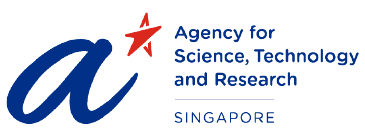Highlights
Quality testing for quantum devices

CQT researchers and their collaborators have come up with a new approach to certifying quantum devices that works for real world conditions and previously untestable situations.
An international team including CQT researchers has come up with a "robust and versatile" scheme for doing quality testing of quantum devices. The scheme is described in a 22 July paper in Physical Review Letters.
The goal of the testing is to certify that a device is providing the promised quantum output without requiring any inspection or calibration of its components. In the future, this could support a vibrant market for quantum technologies: consumers could buy their gadgets from any supplier with confidence because they could test the devices themselves.
"It was already known that one can certify the power of some quantum resources in some specific tasks (cryptography for instance). What we've done goes beyond this. We are able to certify the whole quantum state and the measurements that are acting on it; which means, its usefulness for any possible task," says Valerio Scarani, a Principal Investigator at the Centre for Quantum Technologies, National University of Singapore. He was one of the first to recognise the possibility for quantum devices of 'certification', also known as self-testing, and has been working for years to generalise the approach.
"I'm glad we managed to solve it!" says his student Tzyh Haur Yang, a co-author on the paper. The work forms the main result of his thesis.
Past perfectionism
Even for cases where certification schemes already existed, these schemes were not "robust" – meaning that if the device's performance fell just short of ideal, it would fail the testing even though one might still be able to use it safely. For example, Valerio, Tzyh Haur and collaborators had earlier made a proposal for self-testing of a 'singlet', a perfectly entangled pair of particles. This work recently won the Journal of Physics A's best paper prize 2014, but it had this limitation.
One use for singlets is secure communication. Researchers developing such technology for real-life applications have to take into account that no real-life setup operates perfectly all the time. The problem has been addressed on the protocol side – there are communication protocols that can tolerate some deviation from perfect and still be secure. What about checks on the devices? The previous self-testing scheme could not distinguish between a device producing singlets close enough to perfect to still be useful and those so far off as to compromise the protocol. The new "robust" approach does much better.
Quantitatively, measuring the entanglement of a singlet through a 'CHSH violation' would give 2.828 for an ideal case. The new test tells you that if you measure CHSH larger than 2.57, for example, you have a certified singlet fidelity of more than 70%.
The new scheme is also versatile, in so far that it's based on an approach that can be applied to many scenarios, including some where self-testing was previously impossible. One example is the testing of entangled qutrits (which are three level quantum bits, ie, they could adopt values 0, 1 and/or 2 rather than just 0 and/or 1 like a qubit).
The approach relies on a method known as semi-definite programming. Tzyh Haur spent a few months at the Univeristy of Bristol, UK. There he worked with Miguel Navascués, who pioneered application of semi-definite programming to measurements of quantum correlations, and the groups collaborated to realise the new scheme. Jean-Daniel Bancal of CQT and Tamás Vértesi of the Hungarian Academy of Sciences are also authors on the paper.







